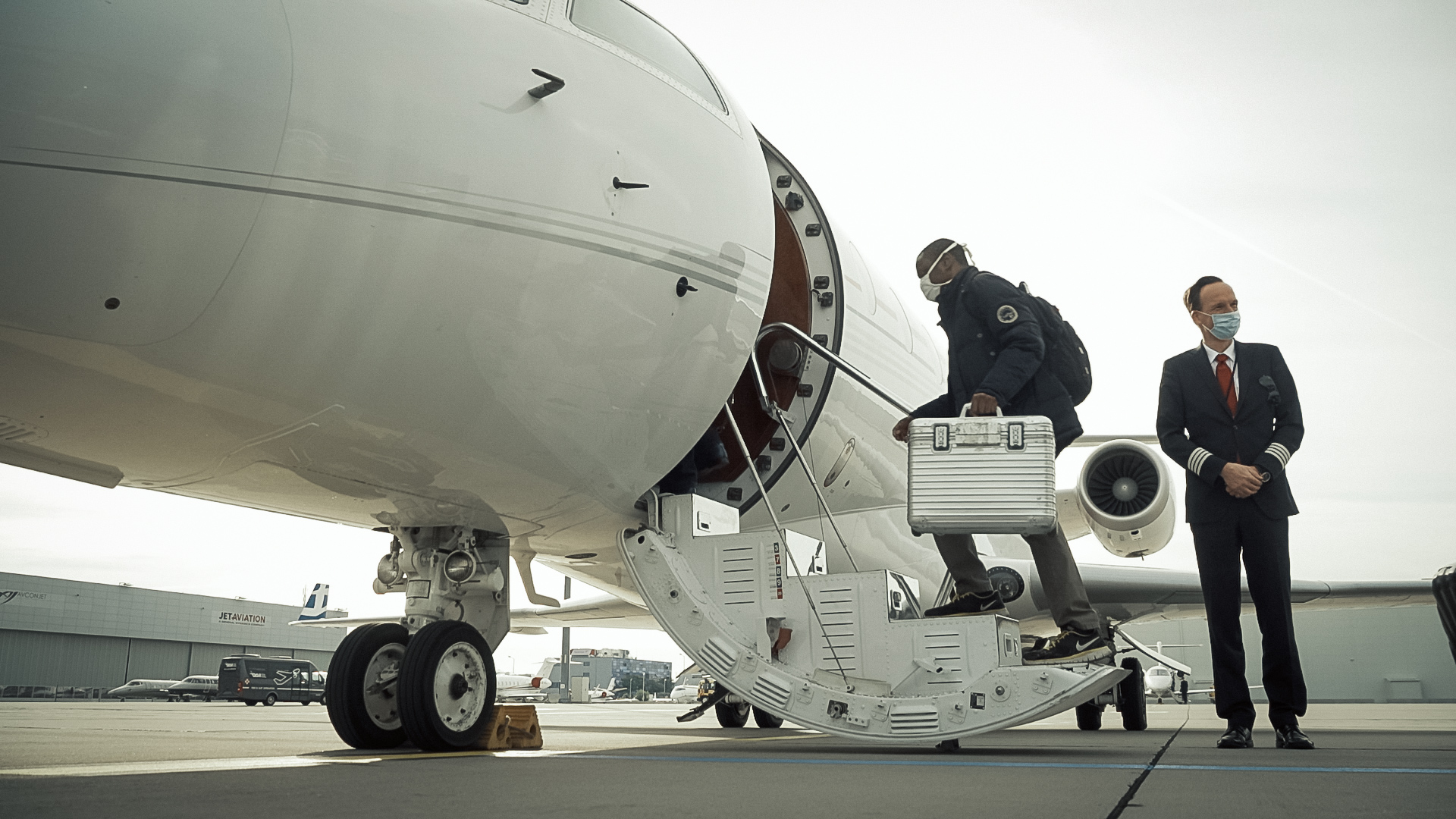
If you would like to learn more about the IAEA’s work, sign up for our weekly updates containing our most important news, multimedia and more.
Safeguards during COVID-19
Megan Porter
The COVID-19 pandemic affected every part of the world, with impacts reaching beyond the immediate concerns of public health and health care systems. During the time of the most heightened restrictions caused by COVID-19, the IAEA completed almost the same amount of verification activities as prior to the onset of the pandemic. To carry out its mission, IAEA inspectors and technicians had to adjust to, and overcome, the following measures around the world:
• Travel restrictions: Commercial flight restrictions and cancellations meant that many countries were hard to reach, and some not reachable at all, via commercial aviation. Immigration measures, such as allowing entry only to citizens and residents, also made access to some countries challenging.
• In-country restrictions: Restrictions on the movement of people and the availability of goods and services, such as hotel accommodation, posed logistical challenges.
• Access restrictions to IAEA offices and laboratories: In line with nationally imposed lockdowns, IAEA personnel in Vienna and Seibersdorf, Austria, worked from home for various periods throughout 2020 and 2021. Similar measures were imposed on the IAEA’s safeguards regional offices in Tokyo and Toronto. These restrictions caused delays and challenges, especially for performing work that needed to be done in a secure environment.
• Access restrictions to facilities and sites: Access restrictions at nuclear facilities and other locations meant that some in-field safeguards activities were difficult to complete.
• Health and safety requirements: Staff were subject to quarantine requirements, additional personal protective equipment (PPE) and compulsory polymerase chain reaction (PCR) tests.
These measures had a significant impact on the Agency’s implementation of safeguards and on its ability to conduct in-field verification activities.
Addressing the challenges
Close collaboration between States and the IAEA, and especially the IAEA’s host country, Austria, was essential to overcome evolving travel restrictions and operational obstacles.
“By adjusting to the circumstances and implementing specific solutions to address particular situations, the IAEA retained its ability to draw independent and soundly based safeguards conclusions,” said John Coyne, Safeguards Business Continuity Lead and Director of the Office of Information and Communication Systems at the IAEA.
Immediate actions taken by the Agency included prioritizing time-critical safeguards activities and verification efforts; storing equipment and PPE outside of the IAEA’s Headquarters to ensure access for inspectors and technicians; establishing a temporary centralized office with a team to review and monitor in-field verification activities each day; and facilitating PCR testing with support from local medical services prior to and upon return from duty travel.
In the longer term, the IAEA implemented measures that included:
• Charter flights: For the first time in the Agency’s history, aircraft services were chartered to transport inspectors and technical staff.
• Re-focused planning: Annual implementation plans (AIPs), which specify the in-field and Headquarters safeguards activities to be conducted for a State, were adapted to focus on the most time-critical and time-bound safeguards objectives.
• Role of safeguards regional offices: The availability of resident staff at the IAEA’s regional offices in Tokyo and Toronto meant that there were fewer difficulties in safeguards implementation in Japan and Canada compared with other countries (approximately 24 per cent of all the IAEA’s annual safeguards inspections are conducted in Canada and Japan).
• Remote monitoring: More than 1700 data streams continued to deliver images from facilities in 30 countries to the IAEA’s Headquarters in Vienna.
• Staff performance: Agency inspectors and technical staff made extraordinary efforts to fulfil their duties. For example, staff isolated for up to 14 days prior to starting their work and embarked on their mission without knowing in advance how or when they would return to Vienna.
• Support at Headquarters: Staff at the IAEA’s Headquarters also managed travel logistics and other challenges. Equipment engineers and technicians worked to source and supply PPE to ensure health and safety, while the Nuclear Material Laboratory (NML) produced hand sanitizer to overcome international shortages.
Beyond COVID-19: Continuing verification activities
While the pandemic created unique challenges, the IAEA managed to carry out all of its critical on-site verification work. This was the result of a substantial adjustment of processes and workflows. Information analysis and associated interactive teamwork by Agency staff have continued; the processing of country reports and declarations, and associated feedback, were performed; the evaluation of nuclear material balances and analysis of environmental samples were maintained at levels close to normal operations; and the IAEA continued to collect, process and evaluate other safeguards relevant information, such as open source information.
The IAEA conducted more than 3000 in-field verification activities and spent more than 14 600 days in the field in 2021. This represents a return to the pre-pandemic trend of increasing in-field nuclear verification.
“The IAEA successfully adjusted to the COVID-19 related restrictions and was also able to complete in-field verification activities carried over from 2020,” Coyne said. “While travel restrictions, including quarantine requirements, still applied in some countries, the Agency increased its verification effort to continue to deliver on
its mandate.”
During 2021, the IAEA conducted verification activities at more than 1300 nuclear facilities and locations outside facilities around the world, while the amount of significant quantities of nuclear material under safeguards increased by 2.1 per cent to more than 226 000. A significant quantity is the approximate amount of nuclear material for which the possibility of manufacturing a nuclear explosive device cannot be excluded.
The experience gained through the COVID-19 pandemic and the resulting changes in some of the IAEA’s practices and procedures have allowed the Agency to continue delivering on its mandate during times of unprecedented challenges.


